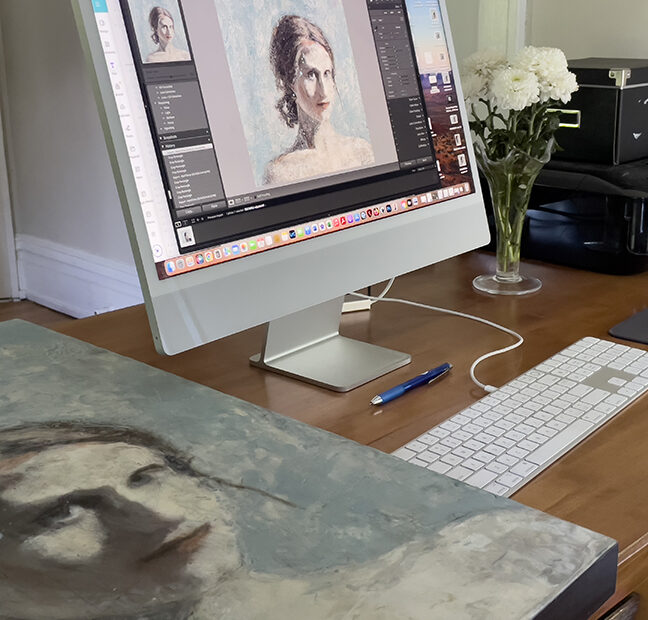A Guide to Getting it Right the First Time.
As an artist, there’s nothing quite like the thrill of seeing my work come to life on someone’s wall. My ultimate goal is for people to live with my work, and I love that I can do that with a wider audience by selling fine art prints of my original encaustic pieces.
But it’s challenging. For many artists, the process of photographing artwork for prints, editing, and producing high-quality reproductions can feel confusing, technical, and overwhelming. I know because I’ve been there—and made every mistake along the way.
Let me break down the basics so you can avoid the frustration and create encaustic art prints that truly honor the beauty of your encaustic originals.
Reproducing art isn’t as simple as snapping a quick photo with your phone. To create fine art prints that actually look like your original work, you need:
- Skills to Photograph Artwork for Prints: Proper lighting, camera gear, and color calibration ensure your work is captured true to life.
- Thoughtful Editing: Even with great photography, color corrections and cropping matter.
- Knowledge on How to Make Art Prints: The right paper, inks, and printer settings can make or break your final product.
Skip any of these steps, and you risk prints that fall flat—or worse, don’t sell because they don’t do justice to your art.
If you love control and want to learn the entire process, you can photograph, edit, and print your own work. If you’d rather focus on painting, you can always outsource the photography, editing and printing. Either way, understanding the process empowers you to make the best decisions for your art.
You don’t have to become a master photographer, editor, and printmaker overnight. You can start with the basics and understand the process and learn all the right questions to ask to make it a seamless process for you. You can slowly build up to doing the entire process yourself.
- Choose the Right Photographer: If you’re outsourcing, find someone who specializes in fine art photography.
- Learn the Editing Workflow: Even a little editing knowledge will help you communicate clearly with printers.
- Understand Printing Options: Fine art papers, archival inks, and sizing options can feel like a foreign language at first—knowing the terms helps.
Time-Saving Tips to Avoid Costly Mistakes
- Always request test prints before placing a big order.
- Ask about ownership rights when hiring a photographer.
- Document your workflow so future reproductions stay consistent.
If this all sounds like a lot, you’re not alone. That’s exactly why I created the From Wax to Wow course—a step-by-step guide to turning your encaustic originals into professional-quality prints without the overwhelm.
You’ll learn everything from photographing artwork for prints to choosing papers and printers—all in clear, easy-to-follow lessons.
Learn More About the Course Here →
Let me know in the comments below what has been your experience with making fine art prints of your orginals.
Be well….be creative,
Clare
Click to learn more about photo encaustic classes, courses, and workshops.
